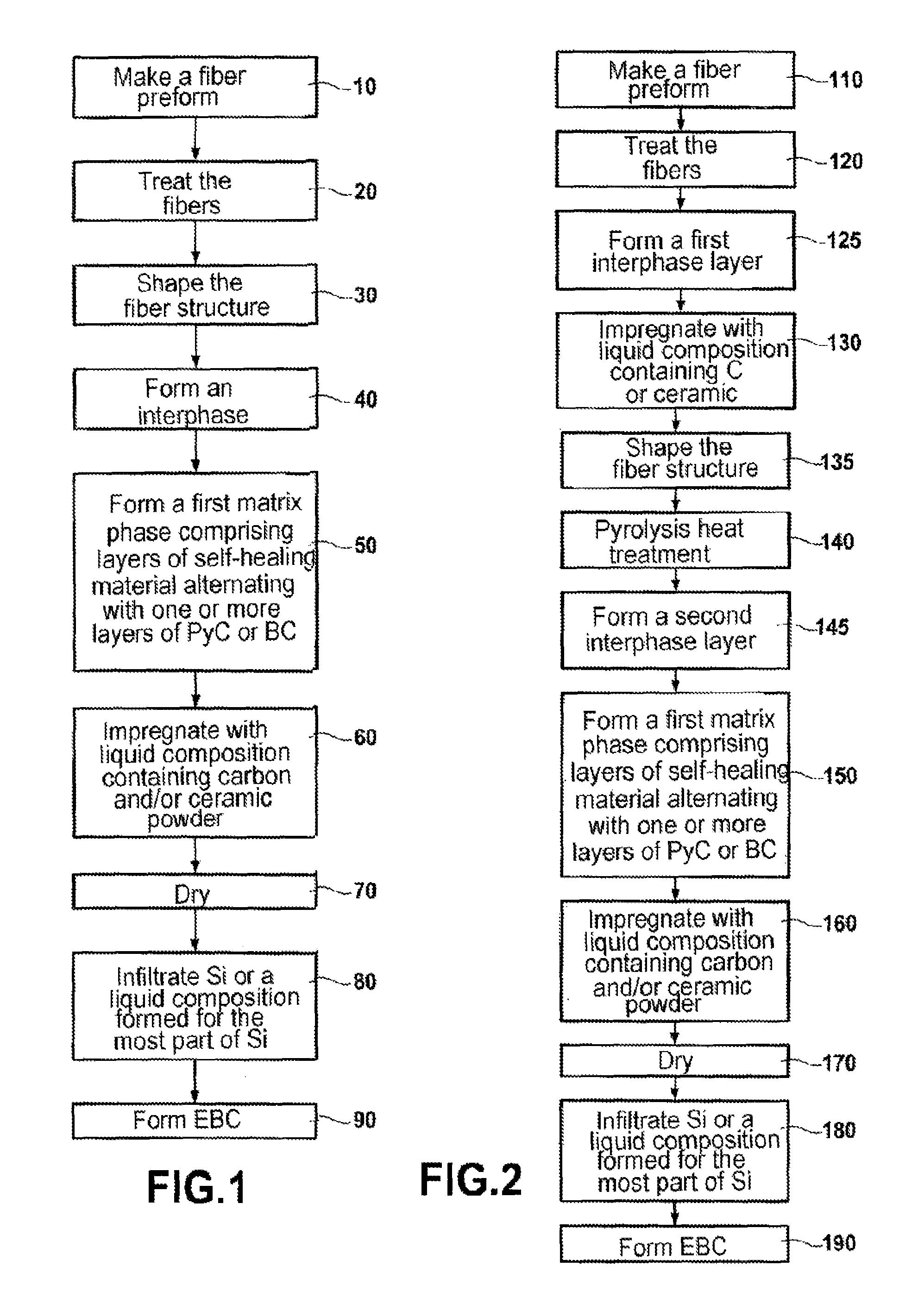Method of fabricating a part out of CMC material
a technology of composite materials and manufacturing methods, applied in the direction of manufacturing tools, machines/engines, ceramic shaping apparatus, etc., can solve the problems of oxidizing atmosphere, short life of parts obtained by the second above-mentioned method, and relatively long densification process, so as to enhance the embrittlement-relief function, prevent or slow down the breakage of fibers, and enhance the crack deflection
- Summary
- Abstract
- Description
- Claims
- Application Information
AI Technical Summary
Benefits of technology
Problems solved by technology
Method used
Image
Examples
Embodiment Construction
[0036]A first implementation of the invention is described with reference to FIG. 1.
[0037]A first step 10 consists in making a fiber structure from which a fiber preform is made having a shape close to the shape of the part that is to be fabricated. Such a fiber structure may be obtained by multilayer or three-dimensional weaving of yarns or tows. It is also possible to start from two-dimensional fiber textures such as woven fabric or sheets of yarns or tows in order to form plies that are then draped on a shape and possibly bonded together, e.g. by stitching or by implanting yarns.
[0038]The fibers constituting the fiber structure are preferably ceramic fibers, e.g. fibers made essentially of silicon carbide SiC (referred to below as SiC fibers), or of silicon nitride Si3N4. In particular, it is possible to use the SiC fibers sold under the name “Hi-Nicalon(S)” by the Japanese supplier Nippon Carbon. In a variant it is possible to use carbon fibers.
[0039]In known manner, with cerami...
PUM
| Property | Measurement | Unit |
|---|---|---|
| thickness | aaaaa | aaaaa |
| thickness | aaaaa | aaaaa |
| temperatures | aaaaa | aaaaa |
Abstract
Description
Claims
Application Information
 Login to View More
Login to View More - R&D
- Intellectual Property
- Life Sciences
- Materials
- Tech Scout
- Unparalleled Data Quality
- Higher Quality Content
- 60% Fewer Hallucinations
Browse by: Latest US Patents, China's latest patents, Technical Efficacy Thesaurus, Application Domain, Technology Topic, Popular Technical Reports.
© 2025 PatSnap. All rights reserved.Legal|Privacy policy|Modern Slavery Act Transparency Statement|Sitemap|About US| Contact US: help@patsnap.com


